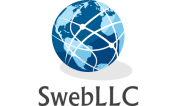What is data?
Data is a set of values of qualitative or quantitative variables. Pieces of data are individual pieces of information.
Within a computer's storage, data is a collection of numbers represented as bytes that are in turn composed of bits (binary digits) that can have the value one or zero (1,0). Data is processed by the CPU, which uses logical operations to produce new data (output) from source data (input).
Examples of computer data
Joe, Smith, 1234 Circle, SLC, UT, 8404, 8015553211 |
0143 0157 0155 0160 0165 0164 0145 0162 0040 0150 0157 0160 0145 |
01100011011011110110110101110000011101010111010001100101011100100010000001101000000101 |
Why data is important?
The Important is Information, and the key importance of information is - it allows a business to make informed decisions by presenting data in a way that can be interpreted by management.
For example telecom companies offer SMS packages and the question is why? The answer is very simple they have the information that their maximum users are young and they want to chat and the best way to earn fast money introduce some packages, marketing strategy.
Where to store the data?
Where to store the data?
Storing data is very important, we have our computer hard drives, external storages, databases, datacenter and cloud as well to store data. There are some other traditional ways like hard filing. Floppies, CD etc.
File Systems
Table
Flash drives/ CD/Floppy
Datacenters
Databases (Data base Management systems (DBMS))
Local databases
Why we store the data?
To manage data and get desired information.
Atomic − Definition should define a single concept.
Traceable − Definition should be able to be mapped to some data element.
Accurate − Definition should be unambiguous.
Clear and Concise − Definition should be understandable.
Data Types?
Data type is a way to classify various types of data such as integer, string, etc. which determines the values that can be used with the corresponding type of data, the type of operations that can be performed on the corresponding type of data
Built-in Data Type
Those data types for which a language has built-in support are known as Built-in Data types.
Integers
Boolean (true, false)
Floating (Decimal numbers)
Character and Strings
Derived Data Type
Those data types which are implementation independent as they can be implemented in one or the other way are known as derived data types. These data types are normally built by the combination of primary or built-in data types and associated operations on them. These are complex Data Structures, which are used to store large and connected data
List
Array
Stack
Queue
Some Basic operations on Data?
In next lectures we will discuss all these in details
Traversing
Searching
Insertion
Deletion
Sorting
Merging
Detailed View of Data Structure.
Sizes of Fundamentals Types
Integer Data Types
Type Name | 32–bit Size | 64–bit Size |
char | 1 byte | 1 byte |
short | 2 bytes | 2 bytes |
int | 4 bytes | 4 bytes |
long | 4 bytes | 8 bytes |
long long | 8 bytes | 8 bytes |
Integer Type Aliases
Type Name | Description |
int8_t | 1 byte signed integer |
int16_t | 2 byte signed integer |
int32_t | 4 byte signed integer |
int64_t | 8 byte signed integer |
intptr_t | Signed integer of size equal to a pointer |
uint8_t | 1 byte unsigned integer |
uint16_t | 2 byte unsigned integer |
uint32_t | 4 byte unsigned integer |
uint64_t | 8 byte unsigned integer |
uintptr_t | Unsigned integer of size equal to a pointer |
Floating-Point Data Types
Type Name | 32–bit Size | 64–bit Size |
float | 4 bytes | 4 bytes |
double | 8 bytes | 8 bytes |
long double | 16 bytes | 16 bytes |
Tools
Visual studio
MySQL Management Studio
DevC++
